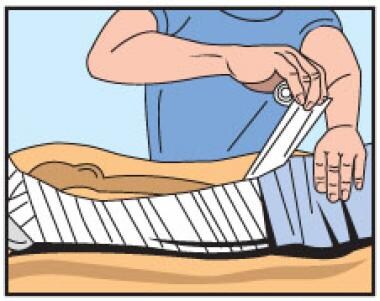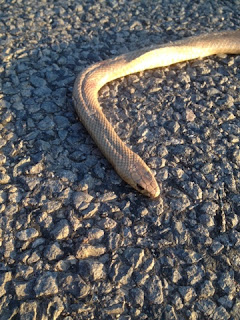Hi everyone,
My good friend Alix suggested a first aid brushup covering snakebite. It's mid-summer here, so I'm more than happy to oblige.
The most important thing to know is that the snake venom travels in the bloodstream, but usually does not enter it directly. The bite is more likely simply to pierce the skin. Venom then slowly seeps through the body's tissues and from there goes into the bloodstream. If the casualty remains as still as possible, the venom will move far less quickly.
Identification
The victim of a snakebite may not know they have been bitten. The bite itself may leave no visible fang mark(s), or only leave a scratch.
The casualty may complain of a headache, blurred vision, confusion or feeling faint or weak. They may appear drowsy or restless. The casualty may be noted to have trouble breathing, speaking or swallowing, or to be salivating or perspiring more than usual. They may also complain of abdominal pain, nausea or vomiting. Where a limb has been bitten, the glands in the groin or armpit may become swollen or tender. There may also be weakness or paralysis in the limbs.
Response
For all types of snakebite
The casualty should be made to lie down and keep still. Monitor them closely. If necessary treat for anaphylaxis or administer resuscitation. Send for an ambulance.
Do not wash the wound: a swab of the area will often enable treaters to select the right antivenom. You should not cut the bite and try to suck out the venom.
Bite on a Limb
Apply "pressure immobilization" by placing a pad over the bite, and then wrapping a broad pressure bandage over the pad and around the limb. Ideally, use an elasticised bandage. If all else fails, use strips of cloth 3-4 inches (7-10cm) wide.
Once the pad is bandaged in place, wrap the entire limb in a second bandage from the fingers or toes to the shoulder or groin. Any clothing should be covered by the bandage: removing it will tend to move the venom. The bandage should be too tight to slide a finger between it and the skin or clothing, but not so tight as to restrict circulation. On that note, do not apply a tourniquet.

Image from here
The bitten limb should be immobilised by binding it against a splint with broad or triangular bandages. Alternatively, a bitten leg can be bandaged against the unbitten leg, and an arm can be placed in a sling or bound against the body.
You should not remove the bandage or splints once applied. Do not elevate the limb as this will tend to speed up movement of the venom.
Bites not on a limb
If the casualty has been bitten on the abdomen, apply firm direct pressure over the bite to the extent that you can do so without restricting breathing or chest movement. If the bite is to the neck or head, do not apply firm pressure.
Bitten while alone
If you have been bitten while on your own, call an ambulance and apply pressure immobilisation. Keep still until help arrives. If you must move, do so as gently or slowly as possible while keeping pressure over the bite.
Acknowledgement
As with other posts in this series, the information supplied is from Kym Eden's Fun with First Aid (2013).

No comments:
Post a Comment